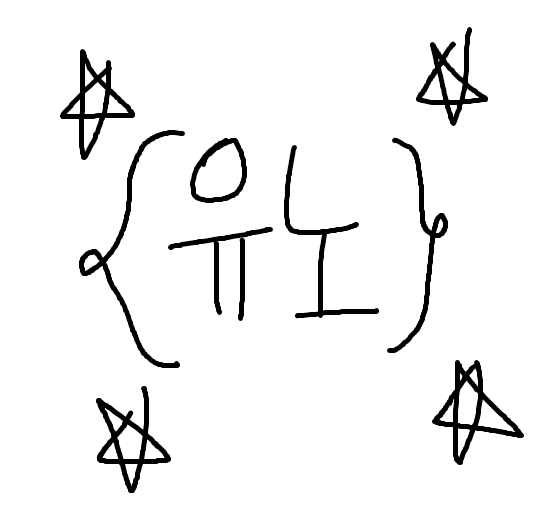https://www.acmicpc.net/problem/15683
15683번: 감시
스타트링크의 사무실은 1×1크기의 정사각형으로 나누어져 있는 N×M 크기의 직사각형으로 나타낼 수 있다. 사무실에는 총 K개의 CCTV가 설치되어져 있는데, CCTV는 5가지 종류가 있다. 각 CCTV가 감
www.acmicpc.net
난이도 : 골드 4
태그 : 구현, 백트래킹, 브루트포스, 시뮬레이션
설명
기업 코테에서 정말 자주 나오는 문제 유형은 뭘까요?
사실 저도 기업코테를 많이 본 사람은 아니지만,
구현은 일단 안나온 적은 없었던 것 같고,
DFS/BFS/백트래킹도 정말 굉장히 자주 나왔던 것 같습니다.
구현 문제 중에서도 시뮬레이션 역시 단골 유형 중 하나인 것 같습니다.
분리집합/다익스트라 등도 좀 있던 것 같고요.
그런 의미에서 이번 문제는
백트래킹/브루트포스 + 구현 + 시뮬레이션이 섞인... 혼종이지만 코테 준비에는 꽤 좋을 것 같은 문제네요.
소스코드
import java.util.*
import kotlin.math.min
data class CCTV(val type: Int, val x: Int, val y: Int)
lateinit var originMap: Array<Array<Int>>
val cctv = ArrayList<CCTV>()
var n = 0
var m = 0
var min = Int.MAX_VALUE
fun main() = with(System.`in`.bufferedReader()) {
val nm = readLine().split(" ").map { it.toInt() }
n = nm[0]
m = nm[1]
originMap = Array(n) { x ->
val st = StringTokenizer(readLine())
Array(m) { y ->
val value = st.nextToken().toInt()
if (value in 1..5) cctv.add(CCTV(value, x, y))
value
}
}
backTracking(0, originMap)
print(min)
}
fun backTracking(depth: Int, currentMap: Array<Array<Int>>) {
if (depth == cctv.size) {
val sum = currentMap.sumOf { it.count { it2 -> it2 == 0 } }
min = min(min, sum)
return
}
val cctvType = cctv[depth].type
val maxDegree = when (cctvType) {
1, 3, 4 -> 4
2 -> 2
5 -> 1
else -> -1
}
for (degree in 0 until maxDegree) {
val copiedMap = Array(n) { x -> Array(m) { y -> currentMap[x][y] } }
when (cctvType) {
1 -> cctvType1(cctv[depth], copiedMap, degree)
2 -> cctvType2(cctv[depth], copiedMap, degree)
3 -> cctvType3(cctv[depth], copiedMap, degree)
4 -> cctvType4(cctv[depth], copiedMap, degree)
5 -> cctvType5(cctv[depth], copiedMap)
}
backTracking(depth + 1, copiedMap)
}
}
fun cctvType1(point: CCTV, map: Array<Array<Int>>, degree: Int) {
when (degree) {
// 오른쪽
0 -> watchRight(point, map)
// 아래
1 -> watchDown(point, map)
// 왼쪽
2 -> watchLeft(point, map)
// 위
3 -> watchUp(point, map)
}
}
fun cctvType2(point: CCTV, map: Array<Array<Int>>, degree: Int) {
when (degree) {
// 가로
0 -> {
watchRight(point, map)
watchLeft(point, map)
}
// 세로
1 -> {
watchUp(point, map)
watchDown(point, map)
}
}
}
fun cctvType3(point: CCTV, map: Array<Array<Int>>, degree: Int) {
when (degree) {
// 위, 오른쪽
0 -> {
watchRight(point, map)
watchUp(point, map)
}
// 오른쪽, 아래
1 -> {
watchRight(point, map)
watchDown(point, map)
}
// 아래, 왼쪽
2 -> {
watchDown(point, map)
watchLeft(point, map)
}
// 왼쪽, 위
3 -> {
watchLeft(point, map)
watchUp(point, map)
}
}
}
fun cctvType4(point: CCTV, map: Array<Array<Int>>, degree: Int) {
when (degree) {
// 오른쪽, 위, 아래
0 -> {
watchRight(point, map)
watchUp(point, map)
watchDown(point, map)
}
// 왼쪽, 오른쪽, 아래
1 -> {
watchLeft(point, map)
watchRight(point, map)
watchDown(point, map)
}
// 왼쪽, 위, 아래
2 -> {
watchLeft(point, map)
watchUp(point, map)
watchDown(point, map)
}
// 위, 왼쪽, 오른쪽
3 -> {
watchUp(point, map)
watchLeft(point, map)
watchRight(point, map)
}
}
}
fun cctvType5(point: CCTV, map: Array<Array<Int>>) {
watchRight(point, map)
watchLeft(point, map)
watchUp(point, map)
watchDown(point, map)
}
fun watchRight(p: CCTV, map: Array<Array<Int>>) {
for (y in p.y until m) {
if (map[p.x][y] == 6) break
map[p.x][y] = -1
}
}
fun watchLeft(p: CCTV, map: Array<Array<Int>>) {
for (y in p.y downTo 0) {
if (map[p.x][y] == 6) break
map[p.x][y] = -1
}
}
fun watchUp(p: CCTV, map: Array<Array<Int>>) {
for (x in p.x downTo 0) {
if (map[x][p.y] == 6) break
map[x][p.y] = -1
}
}
fun watchDown(p: CCTV, map: Array<Array<Int>>) {
for (x in p.x until n) {
if (map[x][p.y] == 6) break
map[x][p.y] = -1
}
}
CCTV class는 CCTV의 타입, x, y 좌표를 담고 있는 클래스입니다.
watchUp, down, left, right는 각각 상 하 좌 우를 감시하는 메소드인데요.
벽 (6)을 만날 때 까지 탐색합니다.
cctv는 타입 1~5에 따라, 그리고 방향에 따라 watch 메소드들을 조합하여 감시합니다.
그리고, 모든 cctv의 각도에 대해 백트래킹을 적용하여 답을 탐색합니다.
이 과정에서, 매번 새로운 map을 복사하여 건네줍니다.
후기
꽤... 오래 걸렸던 문제입니다.
구현 + 시뮬레이션 유형 특성 상 '아 이게 뭐지... 도저히 못풀겠다...' 보다는
'맞는데 왜 틀림?'을 외치며 예외를 잡아내는데 굉장히 많은 시간을 들였던 것 같습니다.
결국 정답을 받았지만 제출한 코드가 길고 중복되는 내용도 많아 맘에 들지 않아서,
watchUp/down/left/right 등 메소드로 나누고 이를 조합하는 방식으로 리팩토링 했는데, 조금 깔끔해진 것 같네요.
'코딩테스트 > Kotlin' 카테고리의 다른 글
| [백준 1976번] [Kotlin] 여행 가자 (0) | 2023.04.17 |
|---|---|
| [백준 2251번] [Kotlin] 물통 (0) | 2023.04.17 |
| [백준 14940번] [Kotlin] 쉬운 최단거리 (0) | 2023.04.16 |
| [백준 3986번] [Kotlin] 좋은 단어 (0) | 2023.04.16 |
| [백준 1747번] [Kotlin] 소수&팰린드롬 (0) | 2023.04.16 |

